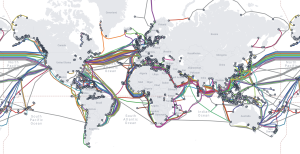Starlink: Revolutionizing Global Internet Connectivity with Satellite Technology
Starlink, the focus keyword, is a groundbreaking satellite constellation developed by SpaceX, founded by Elon Musk. The primary objective of Starlink is to provide high-speed, low-latency internet connectivity worldwide, targeting remote and underserved communities. By leveraging advanced satellite technology, Starlink aims to bridge the digital divide and transform the way we communicate, access information, and conduct business.
The concept of Starlink was first announced in 2015, with the initial goal of launching a constellation of 4,425 satellites into low Earth orbit (LEO). However, the project has undergone significant expansion, with plans to launch up to 42,000 satellites in the coming years. Each satellite is equipped with advanced technology, including Hall effect thrusters, star trackers, and a compact, flat-panel design, allowing for efficient and cost-effective production.
How Starlink Works
Starlink operates by using a network of satellites in LEO, approximately 550 kilometers above the Earth’s surface. When a user sends a request, the signal is transmitted to the nearest Starlink satellite, which then relays the signal to a network of ground stations, known as gateways. The gateways then forward the signal to its final destination, such as a server or another user. This process occurs in a matter of milliseconds, resulting in latency comparable to traditional fiber-optic internet services.
One of the key advantages of Starlink is its ability to provide internet connectivity in areas where traditional infrastructure is lacking or non-existent. This is particularly significant for rural and remote communities, where access to reliable internet services is often limited. With Starlink, these communities can now access the same level of connectivity as urban areas, enabling them to participate in the global digital economy and access essential services such as education, healthcare, and finance.
Benefits and Applications of Starlink
The benefits of Starlink are numerous and far-reaching. In addition to providing internet connectivity to underserved communities, Starlink can also be used for a variety of applications, including disaster response and recovery, remote monitoring and sensing, and in-flight internet services. The low latency and high-speed connectivity offered by Starlink make it an attractive solution for industries such as finance, healthcare, and education, where real-time communication and data transfer are critical.
Furthermore, Starlink has the potential to revolutionize the way we communicate during emergency situations. In the event of a natural disaster, such as a hurricane or earthquake, traditional communication infrastructure is often destroyed or severely damaged. Starlink can provide a vital lifeline, enabling emergency responders to coordinate relief efforts, communicate with affected communities, and provide critical services such as search and rescue operations.
Challenges and Future Developments
Despite the numerous benefits and potential applications of Starlink, there are also challenges and concerns surrounding the project. One of the primary concerns is the impact of the satellite constellation on the Earth’s orbit and the environment. The launch of thousands of satellites into LEO has raised concerns about space debris, signal interference, and the potential for collisions with other satellites or space objects.
To address these concerns, SpaceX has implemented a number of measures, including the use of de-orbiting technology, which allows satellites to burn up in the atmosphere at the end of their lifespan, reducing the risk of space debris. Additionally, the company is working with regulatory bodies and industry stakeholders to develop guidelines and standards for the responsible deployment and operation of satellite constellations.




